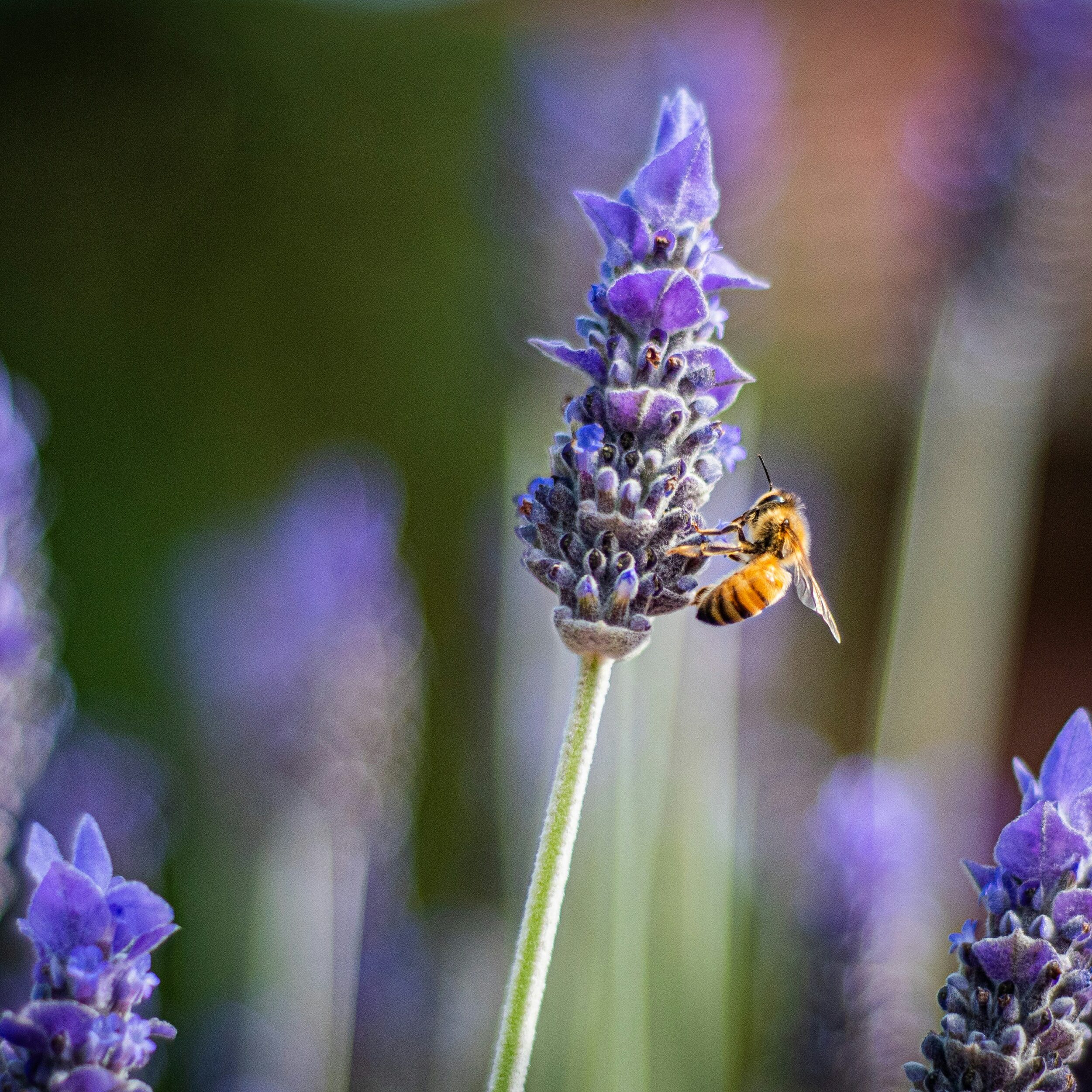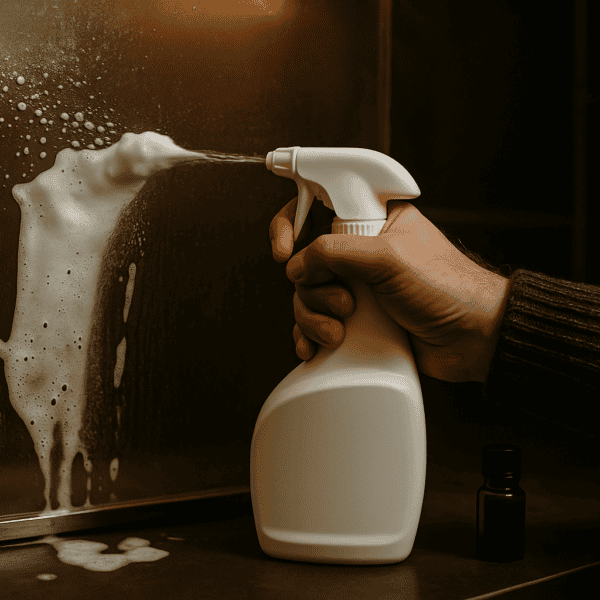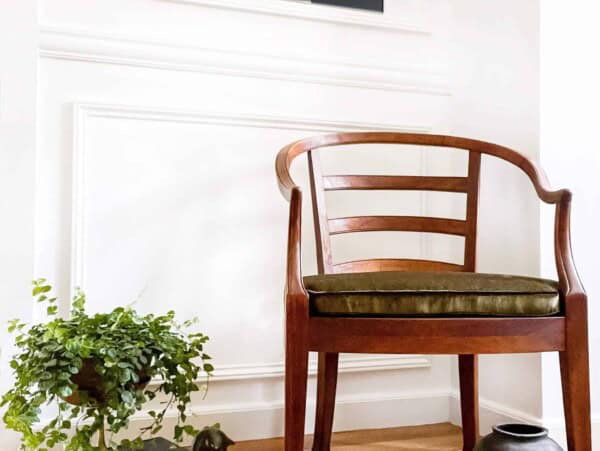I love bees. Really, even if most of us, including me, still tend to shy away from them because of the fear of getting stung. Over time, I have come to love and appreciate bees for all they do for the planet. In fact, I get over the moon when I see them in my garden because they are essential to help keep it growing and thriving. In fact, I holler with joy when I see bees buzzing by because, in the end, it signals a generally happy and healthy backyard. But what happens if you get stung? A home remedy for bee sting baking soda style might be the answer.

I have been thinking about this as I have planted and grown my gardens with plants like lavender and fruit trees in San Francisco and at the cabin. After all, they both encourage bees. Being at the cabin remote – a good home remedy is always a good idea. In that case, today I will share a simple home remedy for bee sting baking soda style. Before you think, a home remedy for bee stings is baking soda. Let me explain below why it works so well.
Oh, and don’t worry if you’re concerned that baking soda alone won’t be enough to ensure bee sting immunity as you work through your list of modern backyard ideas. While I think baking soda is more than enough for most situations, I’ve also included a few alternative methods.
Table of Contents
A Home Remedy for Bee Sting Baking Soda style

Thankfully, my home remedy for bee sting baking soda method isn’t tough to do. All you’ll need to do is a bit of baking soda, some warm water, a cotton ball, and a bandage. At this point, you’ve already been stung, but here are two tips to help prevent stings in the future.
First, if you have anything sweet at all—such as a Hummingbird feeder—that might attract bees, it’s a good idea to move these away from your plants. Secondly, don’t forget to whip out the pruners from time to time. Increased visibility means reduced bee stings.
Now, let’s cover the exact procedure for using baking soda on a bee sting. A few steps are as follows:
1: Mix 2 teaspoons of water with 1/4 cup of baking soda.
2: Continue to mix it vigorously until it’s formed a paste.
3: Apply this paste on the site of the sting.
4: Cover the stung spot and paste with a bandage. Let it be for 15 minutes.
5: After 15 minutes, you can remove the bandage and clean the paste off of your skin with another cotton ball.
I’ll just tell you the bad news upfront: the swelling and pain won’t go away in a single application. Continue to reapply the baking soda paste twice or thrice a day, a couple of hours between each application, until you’re feeling right as rain.
Why does a Home Remedy Bee Sting Baking Soda Work so Well?

By now, you know how to do the home remedy for bee sting baking soda, as well as a few tips on how to prevent future bee stings. Pro tip – it’s always a good idea to give yourself a bit more coverage when you’re worried about bees.
Still, this bee sting treatment seems so simple. Once you try it for yourself, you’ll definitely believe that it works, but the question is “Why?”.
Below, I will help you understand why baking soda works so well in this case.
It’s a base – Home Remedy for Bee Sting Baking Soda
Bee sting injects venom into the body, which has a pH value between 4.5 to 5.5. Simply put, the venom is acidic. That’s the reason why it causes so much irritation and pain after the initial sting.
Baking soda, on the other hand, is a base. Once you mix it with water, it creates an alkaline solution. The pH level of this solution is 8.3, meaning that this alkaline solution can neutralize the effect of the acidic solution. This is one of the primary scientific reasons why baking soda paste works so well to treat bee stings.

It’s Antifungal
Additionally, baking soda has antifungal properties (read this report for more details). Simply put, this means that applying such baking soda paste at the bee sting site can help reduce the chances of a fungal infection. This is great, as the baking soda not only helps you deal with the immediate problems associated with bee sting but also prevents problems in the future.
It’s Antiseptic
Most medical practitioners would probably advise you to apply an antiseptic cream at the insect bite site or a bee sting site. While baking soda paste isn’t a dedicated antiseptic cream, it is antiseptic. Need proof? Here’s another report you can check out.
Being antiseptic means it will help you reduce skin irritation, aid in the healing process, and provide you quick relief from the irritation.
It’s Antibacterial – Home Remedy for Bee Sting Baking Soda
Infections caused by a bee sting are rare, but they do occur. It’s really difficult to tell when a sting is infected until it’s advanced because—from the outside—the site can appear to heal. An infection is much more likely when a complete or partial stinger is left within the skin.
This situation can lead to bacterial growth, which can result in infection. Fortunately, applying baking soda paste can reduce the growth of bacteria, thanks to its antibacterial properties. This means the chances of a bacterial infection will go down as well.
Note: Baking soda isn’t a replacement for a doctor’s intervention when the stinger is left in the skin. In that case, contact your doctor as soon as possible if you can’t remove it yourself.
It’s Skin Soothing
Bee stings pretty much universally result in skin irritation. Baking soda, on the other hand, possesses anti-inflammatory properties. This is great, as applying baking soda paste will reduce the irritation and soothe the skin. Another win for the baking soda paste method.
Want a few more tips to prevent bee stings? I suggest wearing sunglasses while working with your plants to increase visibility. It’s also a good idea to poke around in an area with the neck of a watering can before blindly sticking your hands inside.
Tips to Consider – Home Remedy for Bee Sting Baking Soda

Now that you know why to use it and why it works, it’s time to cover the tips to use this home remedy for bee sting baking soda solution more effectively.
1. Reapply throughout the day
Baking soda paste can be reapplied thrice a day to the affected area until the effect of the bee sting reduces. You can leave the paste on your skin for up to 15 minutes. If you get really lucky, it can even treat the bee sting in a single application on rare occasions.
2. Use only aluminum-free baking soda
It probably should have been one of the first things I covered, but this one is important – not every baking soda is the same. Any additives in the baking soda can change its properties. As such, you’ll want to ensure that it’s aluminum-free baking soda before creating the paste.
I don’t recommend using baking soda variants that contain additives as these could potentially aggravate the problem.

3. Don’t use it along with any medication
Baking soda shouldn’t be applied along with any ointment you’re already using, even if it was advised by your doctor. Avoid mixing your baking soda paste with any other skin-related ointment or creams to ensure success.
4. Don’t use it if you have acne
If you are suffering from any skin-related issues like rashes, acne, or psoriasis, it’s best to avoid baking soda for the time being. Best case scenario, it won’t make a difference. Worst case, however, it could worsen your acne.
5. Apply only when necessary – Home Remedy for Bee Sting Baking Soda
Above, I mentioned that you can use the baking soda three times a day until the effect of bee sting reduces. However, if the severity of the sting has reduced considerably, then it’s better to refrain from applying baking soda, as the returns will be limited at this point.
A Few Alternative Options

All things considered, I recommend my home remedy for bee sting baking soda solution nine times out of ten. There’s more than enough scientific evidence to back up that it works, making it one of the better home remedies around.
Some other common solutions might only work some of the time. For example, a common solution—alkaline toothpaste—will work with bee stings, but not with wasp stings. The devil is in the details, so keep that in mind.
Anyway, here are a few alternatives you might consider checking out!
Apple Cider Vinegar an Alternative to a Home Remedy for Bee Sting Baking Soda

Known for its antibacterial properties, apple cider vinegar is a solid way to treat bee stings. Simply soak a cloth or bandage in the vinegar then hold it in place on your sting for at least fifteen minutes.
Alternatively, white vinegar will work as well.
Honey

Ironically, honey is one of the natural remedies that can be used to treat a bee sting. Raw honey is the best since it has more anti-inflammatory enzymes. Simply apply a small amount of honey on your sting, bandage it up, and leave it in place for up to an hour.
Aloe Vera Gel

Being both antibacterial and anti-inflammatory, using Aloe Vera is an excellent way to treat bee stings. Just spread some Aloe Vera gel on the bee sting and you’re good to go.
If you don’t have any Aloe Vera gel on hand, some essential oils like lavender essential oil are suitable alternatives.
Calamine Lotion
If you’re looking for an OTC alternative then you really can’t go wrong with calamine lotion, which is known to reduce pain and inflammation. Hydrocortisone cream is another option worth checking out.
How to Tell If You Have Allergies

For most people, my home remedy for bee sting baking soda solution will work just fine. However, that’s not the case if you’re one of the 1-2 out of 1,000 people who happens to have a severe reaction to bee stings.
Unfortunately, things quickly get a lot more serious if you have a severe allergic reaction from being stung. Allergic reactions can range widely and include complications such as difficulty breathing, swelling, tightening of the throat, rapid heart rates, dizziness, and hives.
Having trouble breathing after being stung can quickly evolve into a medical emergency, as having an anaphylactic reaction can be life-threatening. Anaphylactic shock is a serious thing, so you shouldn’t take it lightly. Although these may be rare cases, if you notice one of the symptoms from up above after being stung, I implore you to head for medical care right away!
A Few Suggestions

I’ve mentioned a few different ways to prevent bee stings throughout this article. If you’re lucky, you won’t need to use my home remedy for bee sting baking soda solution at all. However, if you’re worried about it then I’d suggest trying out a few of these preventative methods.
- Check before reaching. Whether you use a stick, a rake, or something else, poking into the greenery with something other than your bare hand can help prevent bee stings.
- Cover up. Thick gloves can protect your hands, but you might want to consider wearing something that covers your arms up as well for maximum protection.
- Move attractive objects. Obviously, your plants will pretty much stay where you place them. However, sweet, scented items like hummingbird feeders are easy to move. Doing so can help reduce the number of bees in the area.
- Wear sunglasses. A hat can help as well. Remember, if you can’t see the bees then you won’t be able to avoid them.
- Move slowly. While more aggressive insects tend to attack regardless, many bees will simply move if you accidentally bump into them.
- Consider a greenhouse. Something like this smaller model here is great, as you can keep the bugs out while still ensuring that all of your plant’s needs are met. Alternatively, sticking solely to houseplants could also do the trick.
Home Remedy for Bee Sting Baking Soda Solution: A Summary

It’s hard to find time for things you love when you’re worried about insect stings, Thankfully, with this home remedy for bee sting baking soda solution, you’ll be able to put most of your worries aside. True, it’s still best to avoid getting stung if you can, but at least now you’ll know what to do if you do get stung.
Simply remove the bee’s stinger, wash the area, and follow the home remedy for bee sting baking soda highlighted above, and you should do fine. I hope this was helpful. If it was, please let me know in the comments below.
As always, thanks for reading. See you again soon xoxo
FAQs

What is first aid for bee sting?
First, you’ll want to remove the stinger by sliding your fingernail across it. After it’s removed, you should wash the area and apply a cold pack to reduce swelling. Lastly, apply the paste highlighted in the post above. You could also use OTC painkillers to reduce the pain until the swelling goes down and the toxins get eliminated from the body.
How does baking soda neutralize bee venom?
Baking soda paste forms an alkaline solution; the toxins in bee sting are acidic. The paste works by neutralizing the acidic nature of the toxin, meaning you no longer suffer the side-effects of coming in contact with an acidic solution.
Why do bee stings hurt so bad?
The venom in bee sting impacts the immunization system in the body and the skin cells near the sting area, both of which cause pain. Additionally, the skin cells around the sting area swell, which is why bee stings hurt so bad.
How long till a bee sting stops hurting?
Swelling from bee sting lasts for 48 hours. The redness can last for 3 days if you don’t do anything about it. Fortunately, severe pain only lasts for 2 hours before beginning to subside, but you’ll still likely feel it for a day. The best way to make it stop hurting is to use my baking soda paste to treat it and reduce pain faster.
Should I worry about a bee sting?
Normally, you don’t need to worry about a bee sting. However, things get a lot more serious if you are having difficulty swallowing or breathing after a bee sting. The same is true if you’ve experienced multiple bee stings. In that case, I’d recommend going to the doctor.
What happens if the bee sting is not removed?
If a bee sting isn’t removed from the skin, it will consistently release more venom over time. This will cause additional pain and swelling. The chances of suffering from an infection also go up significantly if you don’t remove the sting, so make sure it’s all taken care of before you turn in for the night.













